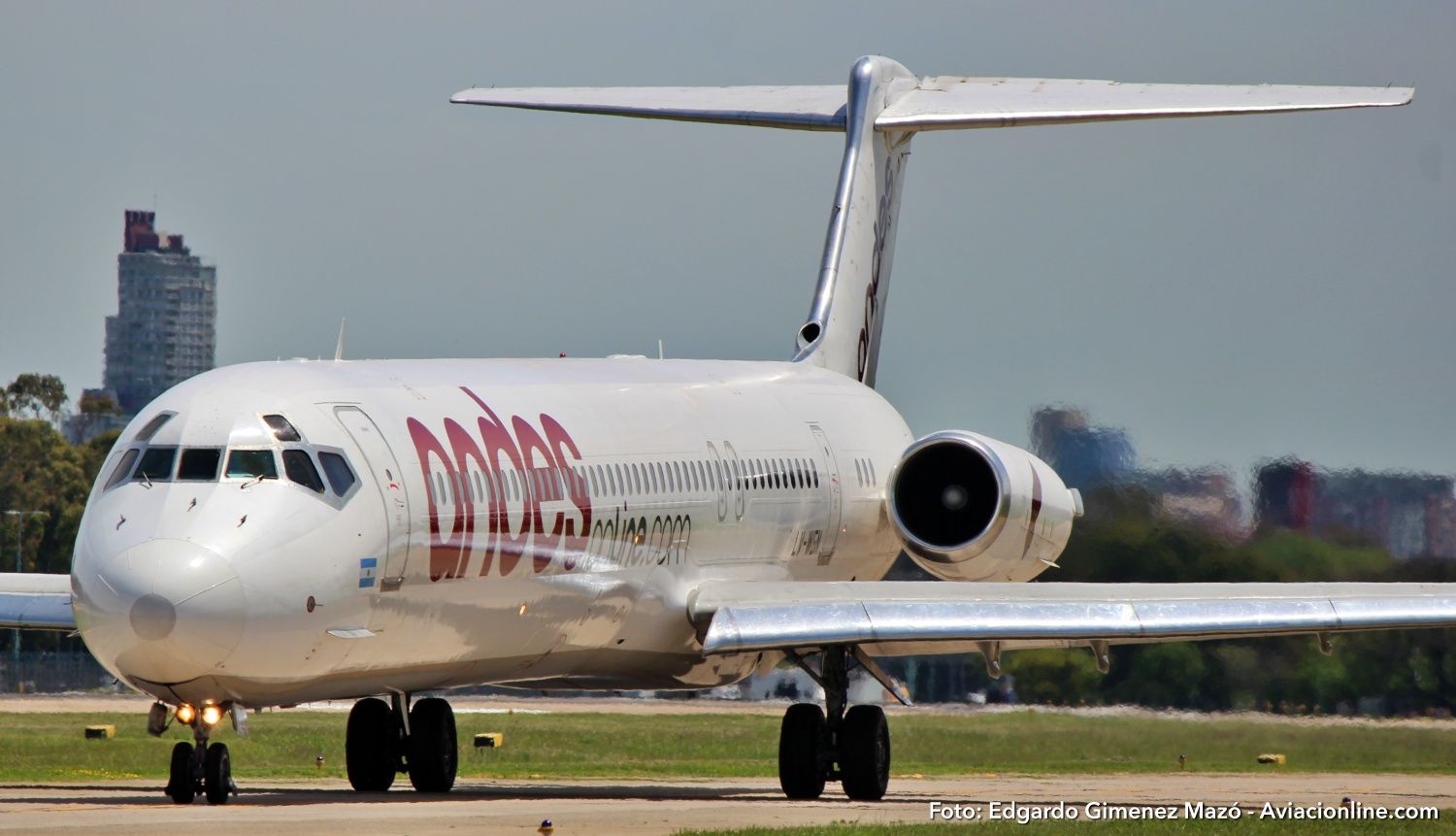Andes Líneas Aéreas executives held a meeting with Paola Tamburelli, head of the National Civil Aviation Administration (ANAC) in which, as reported by the agency through a publication in social networks, the airline «confirmed the resumption of its flights in the short term».
«Both parties reviewed the progress of the company’s recertification process, which is in its final stages», the agency stated.
Andes Líneas Aéreas had suspended its regular operations in November 2019, prior to the outbreak of the COVID-19 pandemic, after being unable to withstand the new competitive context developed after the arrival of low-cost carriers in Argentina in 2018 and an important debt from the province of Chubut. Paradoxically, it was the same opening of the market that had allowed it to grow exponentially from 2016, having reached to mobilize almost 2 million passengers in 2018.
Operations restarted a few weeks later but in February 2020 the situation became even more critical, and it was grounded again.
? @ANACArgentina mantuvo una reunión con el Presidente de @AndesArgentina, operador de capitales argentinos, en la que la aerolínea confirmó la reanudación de sus vuelos a corto plazo ✈️ pic.twitter.com/MZZcbBwH53
— ANAC (@ANACargentina) August 10, 2022
More details remain to be known about the fleet with which it will restart operations and whether there will be new investors behind it or even a partnership with other airlines, as had been suggested last year.
A brief history of Andes
The company was born in 2006 as a solution from Salta to make up for the lack of flights by the then dying Aerolíneas Argentinas of Marsans (in the same context, Sol, LATAM Argentina and Aerochaco were born, year after year).
It had a slow but solid growth that allowed it to end its first year of operations with 94 thousand passengers transported, and to exceed one million by December 2011.
That year it reached the peak of what we could call its first stage of expansion, which led it to incorporate two Bombardier CRJ-900s between 2010 and 2011, and even two Airbus A320s to meet the charter demand in the 2011-2012 summer season.
The following three years its operation shrank sharply, returning to operate only with its own four MDs, having reached a low of only 96 thousand passengers transported in 2014. The first big blow was the eruption of the Puyehue volcano, whose ashes disabled the Bariloche airport for several months, causing Andes to be unable to operate charters contracted from Brazil.
These were extraordinarily complex times for the company, which were not exempt from union actions and layoffs. The jump in the dollar between 2013 and 2015, and the exchange controls were a threat to the charter business, so that international traffic also reached historic lows for Andes.
By mid-2015 the situation began to turn around thanks to the contract that Andes partnered with tourism company Travel Rock to transport senior high school students to Bariloche, which gave it an important respite, closing the year with 176 thousand passengers.
With the change of government and a greater opening of the airline market, Andes entered a second stage of expansion that led it to incorporate four Boeing 737-800s and add nine destinations between 2016 and 2017, years in which it mobilized 246 thousand and 641 thousand passengers. The boom in cabotage, complemented by the boom in charters abroad, meant that in 2018 it reached its peak of 1.02 million passengers.
The growth seemed to have no limits, until the exchange rate run in the middle of that year hit its financial capacity to face the leasing in dollars of the 737-800, which added to the arrival of the low-cost airlines, the liberalization of the fare floor, the rise of oil and an economy in crisis, caused the company to readjust its operations, get rid of the Boeing and have to lay off personnel. Two other key factors: the loss of the Travel Rock contract in 2019 and a millionaire debt from the province of Chubut.
From the last quarter of 2018 and until September of this year, passenger traffic was collapsing month by month. In September they transported only 19 thousand passengers, a floor not touched since May 2016.
Its network was reduced to Buenos Aires, Salta, Bariloche, Comodoro Rivadavia, Puerto Madryn and Mendoza, while its operating fleet before the suspension of its operations at the end of 2019 varied between one or two MD-83 aircraft and around 250 employees who were left in a labor limbo and owed salaries.
The last official communication from Andes about a potential restart of its flights had been in October 2020, announcing that this would occur on December 21, but nothing happened.
In February of this year, a rumor arose that Nella Airlines had been negotiating the acquisition of Andes.
The group had already bought Venezuela-based Albatros in July 2021, and in September completed the USD 50 million purchase of Bolivia-based Amaszonas Líneas Aéreas. In addition, in November it showed interest in reviving the LAP brand, Líneas Aéreas Paraguayas, with two Boeing 737-800s.
Falcon Vision is one of the companies linked to the Public Investment Fund (PIF), the largest public investment fund in the world, headed by Mohammad bin Salman bin Abdulaziz Al Saud, Crown Prince of Saudi Arabia, Deputy Prime Minister and current Minister of Defense of his country. According to what has been previously communicated, an investment of USD 350 million is foreseen once the Brazilian authorities finalize the authorization processes.


Comentarios
Para comentar, debés estar registrado
Por favor, iniciá sesión